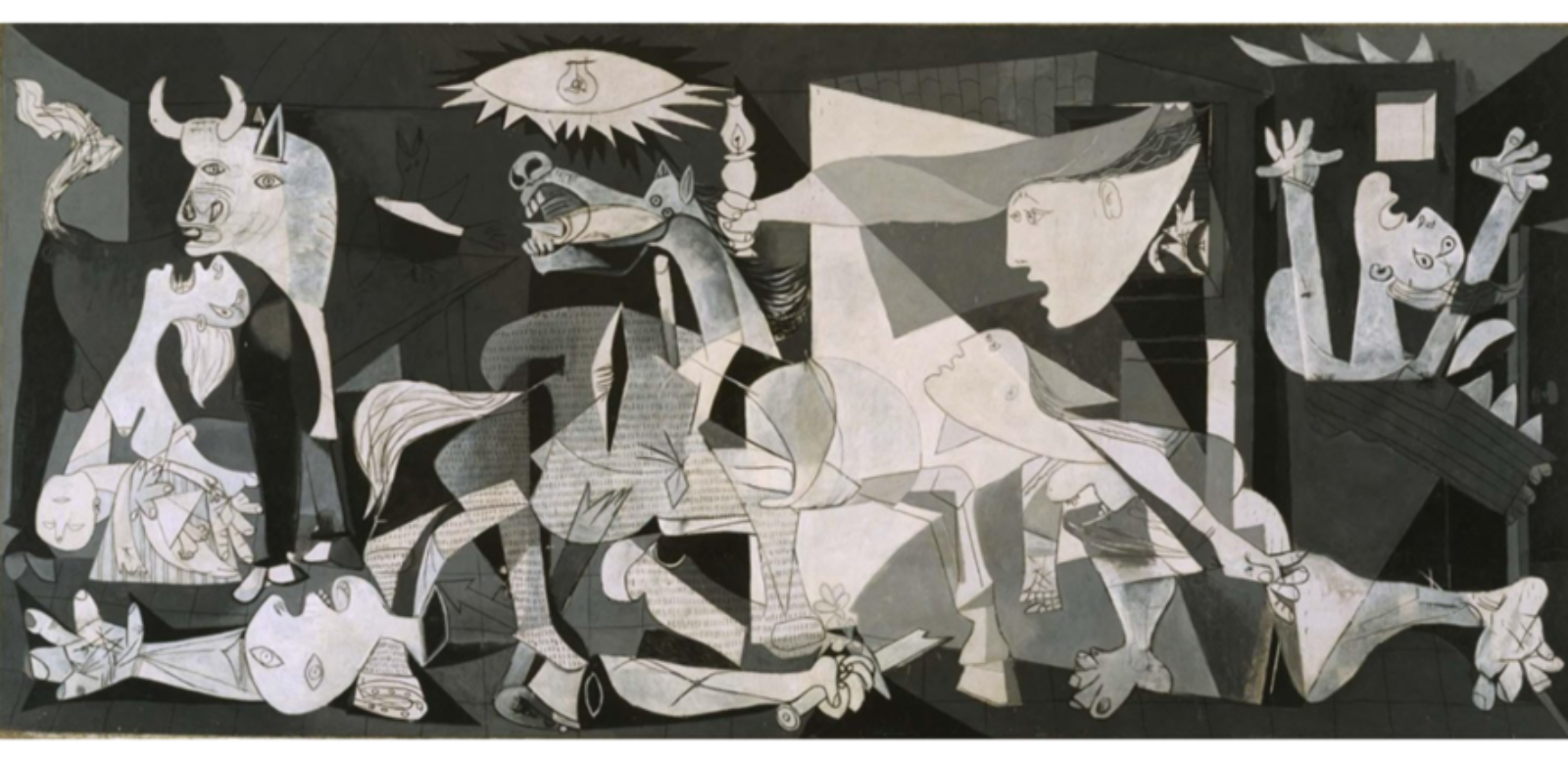
© Sucesión Picasso, VEGAP, Madrid, 2023.
Guernica was completed by Pablo Picasso on 4 June 1937 in Paris. It is a large canvas created to form part of the Spanish Pavilion at the 1937 Paris International Exhibition.
According to Paloma Esteban Leal (n. d.), Picasso conveys the tragedy he wishes to depict through a sober and intense range of colours, with muted tones. In this work, monochrome reigns supreme, using a kind of grisaille (with the exception of some browns or reds) which gives the work the sobriety and drama of the war theme: the bombing of Guernica.
In the documentary Especial Picasso (1981), produced by RTVE, Josep Palau i Fabre analyses and describes Guernica as a ".... A work in which all his previous plastic adventures converge. But, beyond the plastic adventures and the aesthetic sense that can be found in the interpretation of Guernica, there is a deeper meaning. He turns to his past, because his past is a sum of victories. When Picasso produced the paintings of the blue period, he did so against the tide of the currents of the time, which were those of Impressionism and Post-Impressionism, that is to say, those of the coming out into the light. He, on the other hand, shut himself up in the camera obscura. Cubism is another victory, because it goes against the trends of the time. And so on (...) As these victories are, he wants to set all his past victories against the moral defeat or punishment of the bombing of Guernica. (...). What the bombing of Guernica inspired in him, I think, can illustrate Picasso's mentality and feelings. For him it means the oppression of a very powerful Nazi air force in the service of Franco against a poor defenceless population. This Picasso, this Picasso moved by ethics, is the Picasso of all times that we will find permanently in his work and in his life".
On the other hand, Jesús María González de Zárate (2013), who has analysed the iconography of the work, identifies that it can be divided into two groups. The first is that of animals, in which he depicts a bull, a wounded horse and a bird, animals that the artist had already depicted on other occasions and which have a strong symbolic meaning for him.
The second group is made up of human beings, with soldiers and several women. The depiction of women in this work would be used by Picasso in his subsequent works to express fear and horror. Elements such as pointed tongues, gaping mouths and exaggeratedly elongated limbs are examples of this (González de Zárate, 2013).
There are more elements that form part of the iconography of this piece, one of which is the light bulb that illuminates the scene. The representation of this element is a symbol of technical progress, alluding to the historical moment of progress in the artist's life.
The process of creating the work was documented in a series of photographs taken by Dora Maar, his partner at the time. These photographs have been used to trace the process of the artistic creation of the work. Through these photographs we can see how Picasso's thinking and attitude changed throughout the creation of the work. This can be seen in the different elements that the artist changed. As Josep Palau i Fabre recounts in the RTVE documentary (1981): "Guernica, according to his plans and in its original state, contained a raised arm with a clenched fist, which obviously signified revenge. But this fist and this arm were removed from the final version. This means, in my opinion very clearly, that Picasso eliminates the idea of revenge and the painting becomes simply a complaint and a cry against war, that is, a quejío, to put it in Andalusian terms".
Guernica is currently in the Reina Sofía Museum in Madrid, in the rooms recreating the pavilion of the Spanish Republic in 1937.
References:
- Esteban Leal, P (n. d.). Guernica. Museo Nacional Centro de Arte Reina Sofía. Available at: https://www.museoreinasofia.es/coleccion/obra/guernica
- Revenga, L. (1981). Picasso Especial. [Documentary; online]. RTVE Play - Colour documentaries. Available at: https://www.rtve.es/play/videos/documentales-color/especial-picasso/2910595/
- González de Zárate, J. M. (2013). El Guernica. Iconographic study. Editorial Isid Lagun.

